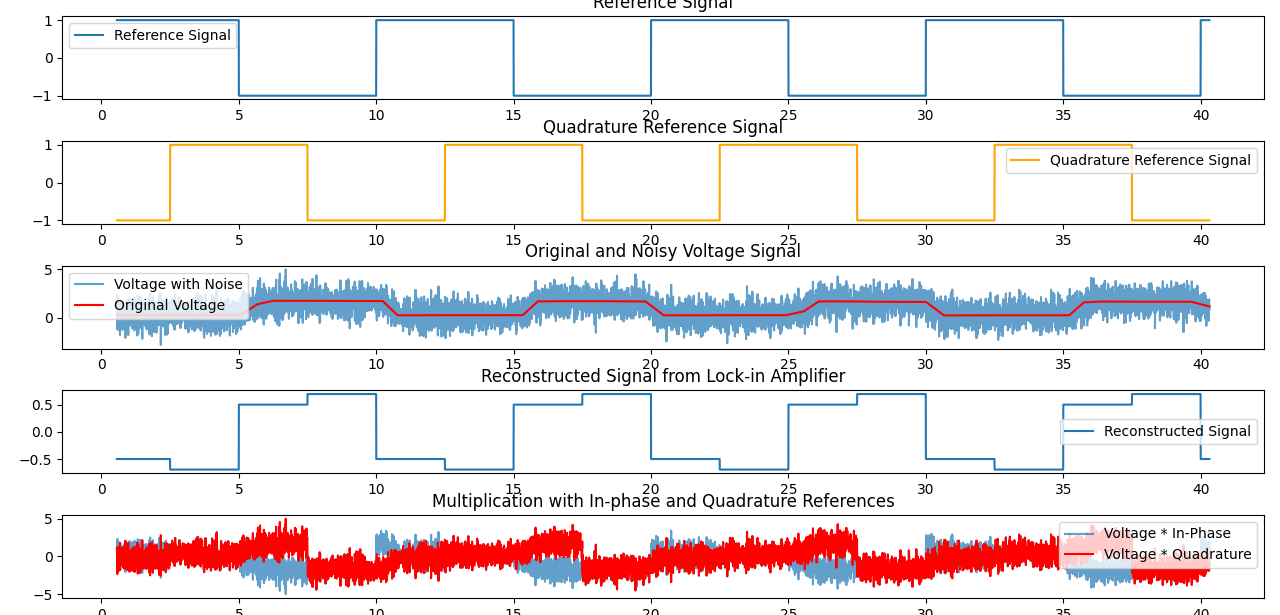I have a noisy signal which is the voltage output from a photodetector circuit. I have researched about extracting signals, and found that lock-in amplifiers are one of the main approaches for the photodetector circuit.
I have a laser which is on for 5s and off for 5s. I am measuring the voltage from a photodetector circuit respective to that laser. The voltage has an amplitude of 1V and has noise. I wrote a python code for lock-in amplifier and got the below outputs.
But the output of the reconstructed signal is having amplitude from -0.5V to 0.5V. How can i get the output voltage correctly?
The SNR of both the input and extracted signals are below. SNR of Input Noisy Signal: -2.36 dB SNR of Extracted Output: 5.33 dB
As you can see that the SNR of the extracted is not very good. Can anyone suggest whether my approach is a correct?

